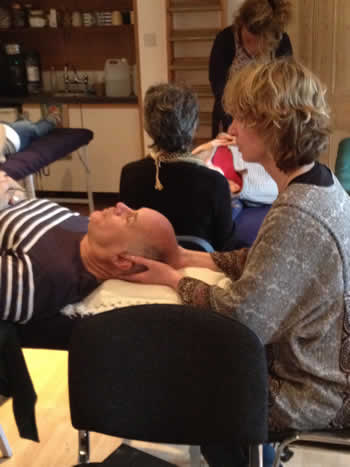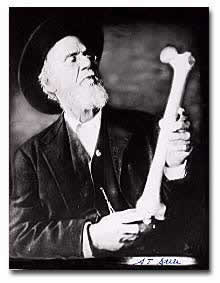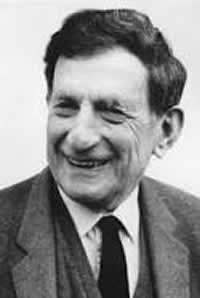Positive Health Online
Your Country

Osteopathy - It's Only a Model
by Jonathan Lawrence(more info)
listed in craniosacral therapy, originally published in issue 209 - October 2013
For this column I am going to wax philosophical. Before training as an Osteopath I completed a series of courses as part of my Open University degree in sciences and psychology. Osteopathy to me was the application of scientific principles in a holistic context. Holism is an ideal, which is not clearly defined but one I find attractive and wish to explore and be able express in a clear and cogent way.
When doing a presentation to a group of GPs in the late 80s one of the participants said that she thought that GPs where holistic because; “we treat everything”.
I was lucky enough to hear the late Penny Brohn, co-founder of the celebrated Cancer Centre in Bristol give a talk in which she said that her profession, nursing was the first holistic therapy as nurses at that time cared for the whole person; A definite improvement on the “We treat everything” definition.
I would define the holistic approach to treatment as seeing the patient’s presentation in the context of the whole. Take a patient, for example presenting with pain in the calf muscle. Most physiotherapists would see this as a muscle problem and treat accordingly with soft tissue manipulation and exercises. An Osteopath on the other hand would look at the whole structure in order to put the patient’s presentation in context of the whole person by looking initially at the balance of the whole structure, then looking at the physical, mechanical and neurological context of the problem.

A recent such patient presenting with pain in a small part of the calf muscle revealed a disturbance of muscle chains through the hamstrings with trigger points and an area of acute tenderness in the piriformis muscle in the same side, and finally tenderness and restriction of motion at the lumbo-sacral joint. The case history revealed that the patient’s work involved adopting a posture in which more weight passed through the left ischial tuberosity in the seated position. In addition he was a road runner that which would have exacerbated the stress in the area. Having been understood, the issue was easily resolved by treating the identified causes.
The context of other presenting problems may be wider involving psycho-emotional and social factors too.
Complementary medicine brings together a number of disciplines that range from the scientifically grounded to the more esoteric energy medicines. My profession Osteopathy is based on the key concept of the relation between structure and function and the assumption that the body has the capability of self-healing.
I also use homotoxicology, which is based on homeopathy. Homeopathy sees symptoms as the organisms’ attempts to restore balance and the function of the vital force. According to the Homeopathy Plus Website:
“All living things have a ‘force’ that maintains and directs life. This is true whether that living thing is human, plant, or animal. This force is a form of energy that underpins all biophysical and biochemical processes, and separates living from non-living matter. Throughout history, this spark has had many names and been described in many ways. In the English-speaking world it has been called the innate intelligence, life principle, life force, vitality, dynamis, regulatory force, or vital energy. In other cultures it has been known as qi, chi, or prana. Hahnemann, the founder of homeopathy, called it the Vital Force.”[1]

AT Still
The vital force, chi and prana are vitalistic concepts. These concepts are taboo in conventional medicine. Osteopathy is in curious position here as AT Still the founder was a Vitalist but many Osteopaths now would reject this idea and align themselves with the prevailing paradigm.
Extreme proponents of each paradigm believe that their philosophy is the ultimate expression of the ‘Truth’. Most of us however understand that these mostly very useful concepts are models of reality rather than reality itself. Consider the famous anecdote about the elephant:
“A group of blind men touch an elephant to learn what it is like. Each one feels a different part, but only one part, such as the side or the tusk. They then compare notes and learn that they are in complete disagreement.”[2]
Each model sees a different part of the elephant and although their descriptions vary they are describing the same reality. So how can we bring all these beautiful concepts together and express them in a way that can be understood in a modern context?

David Bohm
A number of scientists have seen the similarity between science and eastern religion and philosophy. Frijtof Capra’s ground-breaking book The Tao of Physics described this very well.[3] Similarly David Bohm’s book Wholeness and the Implicate Order shows a scientific perspective of the unity and interconnectedness of reality.[4]
Capra used the term paradigm shift for what he felt was an inevitable, desirable and necessary change in world view from the reductionist to the holistic in view of the ecological challenges of rising population and consequent degradation of the planet. This shift would also encompass an adoption of more holistic approaches to healthcare.
I would imagine that the vast majority of those reading this article would be in agreement with Capra. However there is a significant and influential group who are opposed to such ‘fluffy’ thinking, some of whom are quite aggressive in their opposition. Whilst posing as defenders of ‘science’ and ‘rationality’ they use some quite irrational and unscientific arguments to back their case. These people include scientific fundamentalists and those with commercial interests. Some of the opposition is well organized and no doubt represent corporate interests.
There are many who defend the reductionist point of view for sound reasons. Maybe the key assumption that they make is that science based on this paradigm has been very successful, a typical argument would be:
“Just look at the world around us! It is obvious about the benefits of science and technology. We are now at the stage when we know just about everything, all we need to do is fill in the details”.
I recall Richard Dawkins saying something similar on Desert Island Discs many years ago. In contrast, proponents of the holistic approach feel rather more humble in that there is till a great deal to discover and understand. An amusing take on this point of view can be seen In the Hitch Hikers Guide to the Galaxy, the ultimate punishment for miscreants was the ‘Total Perspective Vortex’ in which they would see themselves as they really are in relation to the Universe. This would destroy them!
How does this philosophizing relate to the way we treat patients? If we treat the patient as a machine or a bag of chemicals as in the reductionist model, we will limit our effectiveness. In failing to take into account key factors in the network of influences on the patient, we are less likely to help them toward a long term resolution of the presenting problem and less likely to recognize that the presenting problem may in itself be the result of an imbalance elsewhere. I believe that simply an awareness of the infinity of connectivity can be helpful in the therapeutic process.
In the Monty Python film Monty Python and the Holy Grail there is a scene when the knights see the castle for the first time. Then in turn they say in awestruck voice: ‘Camelot” until the fifth one in a bored voice says ”Its only a model”. And that’s what our theories are - awesome looking as they may be - only models. The question is not how attractive they are as ideas but how useful they may be.
The reductionist model, assuming the body is a mere machine, like a car, treats chains of cause and effect eliminating symptoms successfully, but with resultant side effects and knock on effects to the functioning of the rest of the system.
As acute illness has been conquered, statistics suggest, by improvements in the social environment rather than medical advances, chronic illness in the developed world is increasing alarmingly. I have seen this put down to vaccinations, GMOs, diet lifestyle and other medications - all attempts to treat simple cause effect relationships without understanding the context of the organism and its relationship to the social and economic environment.
The effect of this is to increase the toxic stresses on the organism. Some people have a great capacity to absorb and eliminate toxins, but that capacity is being tested more and more in a stressed internal and external environment.
Much of our environmental and medical problems have been created by reductionist thinking. The solution is holistic thinking. Joining the dots will allow us to see the whole picture.
References
1. http://homeopathyplus.com.au/tutorial-7-the-vital-force/
2. https://en.wikipedia.org/wiki/Blind_men_and_an_elephant
3. Capra, Fritjof. The Tao of Physics 3rd Edition, London: Harpercollins. 2010.
4. Bohm, David. Wholeness and the Implicate Order, London: Routledge, ISBN 0-7100-0971-2. 1980.
Comments:
-
No Article Comments available